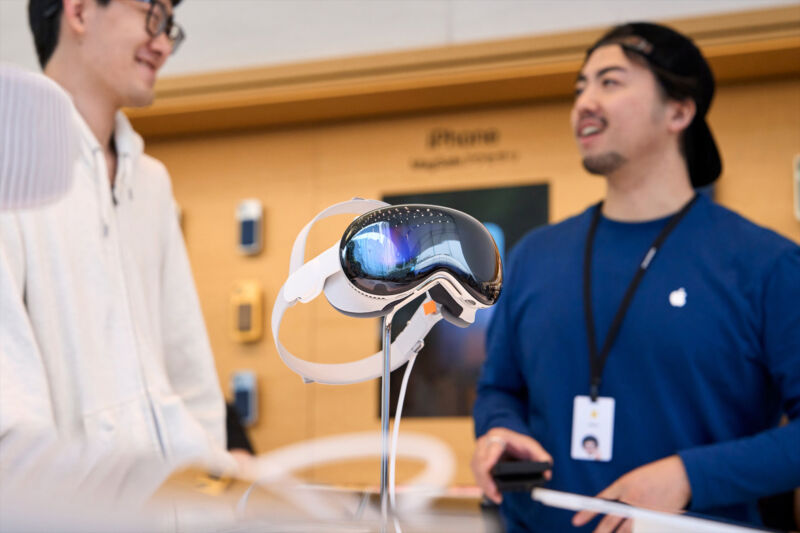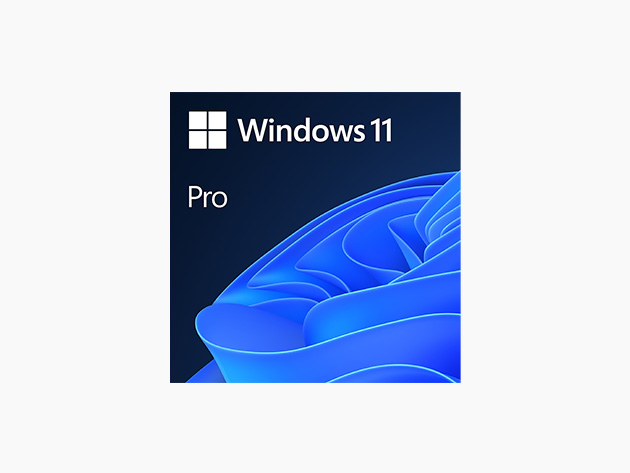The far right is on the rise ahead of elections in France. Here’s what you need to know.


© Thibault Camus

© Jeff Pachoud

© Dimitar Dilkoff

© Julie de Rosa


© Thibault Camus

© Jeff Pachoud

© Dimitar Dilkoff

© Julie de Rosa

© Sylvia Jarrus for The New York Times
Read more of this story at Slashdot.
If you’re looking for the Wordle answer for June 29, 2024 read on. We’ll share some clues, tips, and strategies, and finally the solution. Today’s puzzle is medium difficult; I got it in four. Beware, there are spoilers below for June 29, Wordle #1,106! Keep scrolling if you want some hints (and then the answer) to today’s Wordle game.
Wordle lives here on the New York Times website. A new puzzle goes live every day at midnight, your local time.
Start by guessing a five-letter word. The letters of the word will turn green if they’re correct, yellow if you have the right letter in the wrong place, or gray if the letter isn’t in the day’s secret word at all. For more, check out our guide to playing Wordle here, and my strategy guide here for more advanced tips. (We also have more information at the bottom of this post, after the hints and answers.)
Ready for the hints? Let’s go!
We’ll define common letters as those that appear in the old typesetters’ phrase ETAOIN SHRDLU. (Memorize this! Pronounce it “Edwin Shirdloo,” like a name, and pretend he’s a friend of yours.)
Three of today's letters are from our mnemonic. One is fairly common, and one is uncommon.
Like a horse, but always black and white.
There are no repeated letters today.
There are two vowels.
Today’s word starts with Z.
Today’s word ends with A.
Ready? Today’s word is ZEBRA.
I started with RAISE, then tried BLOND, thinking it unlikely that there were any additional vowels. There were only a few words with those four letters that didn't start with R or B—I guessed AMBER first, which left ZEBRA as the best solution.
Wordle 1,106 4/6 🟨🟨⬛⬛🟨 🟨⬛⬛⬛⬛ 🟨⬛🟩🟨🟨 🟩🟩🟩🟩🟩
Yesterday’s Wordle was harder. The hint was “as a verb, past tense; as a noun, a flock of animals” and the answer contained four common letters and one uncommon letter.
The answer to yesterday’s Wordle was DROVE.
The idea of Wordle is to guess the day’s secret word. When you first open the Wordle game, you’ll see an empty grid of letters. It’s up to you to make the first move: type in any five-letter word.
Now, you can use the colors that are revealed to get clues about the word: Green means you correctly guessed a letter, and it’s in the correct position. (For example, if you guess PARTY, and the word is actually PURSE, the P and R will be green.)
Yellow means the letter is somewhere in the word, but not in the position you guessed it. (For example, if you guessed PARTY, but the word is actually ROAST, the R, A and T will all be yellow.)
Gray means the letter is not in the solution word at all. (If you guessed PARTY and everything is gray, then the solution cannot be PURSE or ROAST.)
With all that in mind, guess another word, and then another, trying to land on the correct word before you run out of chances. You get six guesses, and then it’s game over.
What should you play for that first guess? The best starters tend to contain common letters, to increase the chances of getting yellow and green squares to guide your guessing. (And if you get all grays when guessing common letters, that’s still excellent information to help you rule out possibilities.) There isn’t a single “best” starting word, but the New York Times’s Wordle analysis bot has suggested starting with one of these:
CRANE
TRACE
SLANT
CRATE
CARTE
Meanwhile, an MIT analysis found that you’ll eliminate the most possibilities in the first round by starting with one of these:
SALET
REAST
TRACE
CRATE
SLATE
Other good picks might be ARISE or ROUND. Words like ADIEU and AUDIO get more vowels in play, but you could argue that it’s better to start with an emphasis on consonants, using a starter like RENTS or CLAMP. Choose your strategy, and see how it plays out.
We have a few guides to Wordle strategy, which you might like to read over if you’re a serious student of the game. This one covers how to use consonants to your advantage, while this one focuses on a strategy that uses the most common letters. In this advanced guide, we detail a three-pronged approach for fishing for hints while maximizing your chances of winning quickly.
The biggest thing that separates Wordle winners from Wordle losers is that winners use their guesses to gather information about what letters are in the word. If you know that the word must end in -OUND, don’t waste four guesses on MOUND, ROUND, SOUND, and HOUND; combine those consonants and guess MARSH. If the H lights up in yellow, you know the solution.
One more note on strategy: the original Wordle used a list of about 2,300 solution words, but after the game was bought by the NYT, the game now has an editor who hand-picks the solutions. Sometimes they are slightly tricky words that wouldn’t have made the original list, and sometimes they are topical. For example, FEAST was the solution one Thanksgiving. So keep in mind that there may be a theme.
If you can’t get enough of five-letter guessing games and their kin, the best Wordle alternatives, ranked by difficulty, include:
Dordle and Quordle, which ask you to play two (Dordle) or four (Quordle) puzzles at the same time, with the same guesses. There is also Octordle, with eight puzzles, and Sedecordle, with 16.
Waffle, which shows you several five-letter words, scrambled in a grid; you play by swapping the letters around until you solve.
Absurdle, which changes the solution after each guess, but needs to stay consistent with its previous feedback. You have to strategically back it into a corner until there is only one possible word left; then you guess it, and win.
Squabble, in which you play Wordle against other people with a timer running. You take damage if you spend too much time between guesses; winner is the last one standing.
Antiwordle, in which you are trying not to guess the day’s solution. You’re required to reuse any letters that you (oops) guessed correctly, so the longer it takes you, the better you are at the game.





Enlarge / A European ATV cargo freighter reenters the atmosphere over the Pacific Ocean in 2013.
Since the beginning of the year, landowners have discovered several pieces of space junk traced to missions supporting the International Space Station. On all of these occasions, engineers expected none of the disposable hardware would survive the scorching heat of reentry and make it to Earth's surface.
These incidents highlight an urgency for more research into what happens when a spacecraft makes an uncontrolled reentry into the atmosphere, according to engineers from the Aerospace Corporation, a federally funded research center based in El Segundo, California. More stuff is getting launched into space than ever before, and the trend will continue as companies deploy more satellite constellations and field heavier rockets.
"The biggest immediate need now is just to do some more work to really understand this whole process and to be in a position to be ready to accommodate new materials, new operational approaches as they happen more quickly," said Marlon Sorge, executive director of Aerospace's Center for Orbital and Reentry Debris Studies. "Clearly, that’s the direction that spaceflight is going.”
The openSUSE project recently announced the second release candidate (RC2) of its Aeon Desktop, formerly known as MicroOS Desktop GNOME. Aside from the new coat of naming paint, Aeon breaks ground in a few other ways by dabbling with technologies not found in other openSUSE releases. The goal for Aeon is to provide automated system updates using snapshots that can be applied atomically, removing the burden of system maintenance for “
lazy developers” who want to focus on their work rather than desktop administration. System-tinkerers need not apply.The idea behind Aeon, as with other immutable (or image-based) Linux distributions, is to provide the core of the distribution as a read-only image or filesystem that is updated atomically and can be rolled back if needed. Google’s ChromeOS was the first popular Linux-based desktop operating system to follow this model. Since the release of ChromeOS a number of interesting immutable implementations have cropped up, such as Fedora Silverblue, Project Bluefin (covered here in December 2023), openSUSE’s MicroOS (covered here in March 2023), and Ubuntu Core.
↫ Joe Brockmeier at LWN
With the amount of attention immutable Linux desktops are getting, and how much work and experimentation that’s going into them, I’m getting the feeling that sooner or later all of the major, popular desktop Linux distributions will be going this route. Depending on implementation details, I actually like the concept of a defined base system that’s just an image that can be replaced easily using btrfs snapshots or something like that, while all the user’s files and customisations are kept elsewhere. It makes intuitive sense.
Where the current crop of immutable Linux desktops fall flat for me is their reliance on (usually) Flatpak. You know how there’s people who hate systemd and/or Wayland just a little too much, to the point it gets a little weird and worrying? That’s me whenever I have to deal with Flatpaks. Every experience I have with Flatpaks is riddled with trouble for me.
Even though I’m a KDE user, I’m currently testing out the latest GNOME release on my workstation (the one that I used to conclude Windows is simply not ready for the desktop), using Fedora of course, and on GNOME I use the Mastodon application Tuba. While I mostly write in English, I do occasionally write in Dutch, too, and would love for the spell check feature to work in my native tongue, too, instead of just in English. However, despite having all possible Dutch dictionaries installed – hunspell, aspell – and despite those dictionaries being picked up everywhere else in GNOME, Tuba only showed me a long list of variants of English.
After digging around to find out why this was happening, it took me far longer than I care to publicly admit to realise that since the latest version of Tuba is only really available as a Flatpak on Fedora, my problem probably had something to do with that – and it turns out I was right: Flatpak applications do not use the system-wide installed spellcheck dictionaries like normal applications do.
This eventually led me to this article by Daniel Aleksandersen, where he details what you need to do in order to add spellcheck dictionaries to Flatpak applications. You need to run the following commands:
$ flatpak config languages --set "en;nl;"
$ sudo flatpak updateThe list of languages uses two-letter codes only, and the first language listed will serve as the display language for Flatpak applications, while the rest will be fallback languages – which happens to include downloading and installing the Flatpak-specific copies of the spellcheck libraries. Sadly, this method is not particularly granular. Since it only accepts the two-letter codes, you can’t, say, only install “nl-nl”; you’ll be getting “nl-be” as well. In the case of a widely spoken language like English, this means a massive list of 18 different varieties of English. The resulting menus are… Not elegant.
This is just an example, but using Flatpak, you’ll run into all kinds of issues like this, that then have to be solved by hacks or obscure terminal commands – not exactly the user-friendly image Flatpak is trying to convey to the world. This particular issue might not matter to the probably overwhelming English-speaking majority of Flatpak developers, but for anyone who has to deal with multiple languages on a daily basis – which is a massive number of people, probably well over 50% of computer users1 – having to mess around with obscure terminal commands hidden in blog posts just to be able to use the languages they use every day is terrible design on a multitude of levels, and will outright make Flatpak applications unusable for large numbers of people.
Whenever I run into these Flatpak problems, it makes it clear to me that Flatpak is designed not by users, for users – but by developers, for developers. I can totally understand and see why Flatpak is appealing to developers, but as a user, they bring me nothing but grief, issues, and weird bugs that all seem to stem from being made to make developers’ lives easier, instead of users’.
If immutable Linux distributions are really hellbent on using Flatpak as the the means of application installation – and it seams like they are – it will mean a massive regression in functionality, usability, and discoverability for users, and as long as Flatpak remains as broken and badly designed as it is, I really see no reason to recommend an immutable Linux desktop to anyone but the really curious among us.
 ︎
︎


Read more of this story at Slashdot.
Read more of this story at Slashdot.
Read more of this story at Slashdot.
Read more of this story at Slashdot.
Read more of this story at Slashdot.
Read more of this story at Slashdot.
Amazon's early Prime Day deals are here, with deals on school supplies, TVs, Blink security cameras, and more leading up to Prime Day on July 16. Yet another deal has arrived, this time on an Eero router, which can help your wifi reach every area in your home. Amazon has a single router that expands your wifi up to 1,500 square feet for $39.99 (originally $69.99) or a three-pack that expands it to 4,500 sq. ft. for $99.99 (originally $214.96).


Mesh wifi is great if you can justify the cost for the extra devices. It doesn't make your internet faster per se, it just expands your same router speed to different points in your house so the whole house (ideally) is covered. Mesh wifi uses nodes or points that you can physically put around your home where the signal is weak so your devices seamlessly connect to the one with the best connection as you move around the home. It's like copying and pasting your router to different places.
The Eero router expands your reach up to 1,500 square feet, and each router works as a router or "extender." One of the Eero devices must be connected to your router physically with an ethernet cable. The other two just need to be plugged in with their power cord and be within a certain distance of the main router.
If you're more of a Google person, the three-pack Google Nest Wifi Routers are also available for $155.23 (originally $349.99). They work the same way but extend your wifi up to 5,400 square feet and each point doubles as a Google smart speaker.



Enlarge / Boeing's Starliner spacecraft is seen docked at the International Space Station on June 13. (credit: NASA)
NASA and Boeing officials pushed back Friday on headlines that the commercial Starliner crew capsule is stranded at the International Space Station but said they need more time to analyze data before formally clearing the spacecraft for undocking and reentry.
Two NASA astronauts, commander Butch Wilmore and pilot Suni Williams, will spend at least a few more weeks on the space station as engineers on the ground conduct thruster tests to better understand issues with the Starliner propulsion system in orbit. Wilmore and Williams launched June 5 aboard an Atlas V rocket and docked at the station the next day, completing the first segment of Starliner's first test flight with astronauts.
NASA managers originally planned for the Starliner spacecraft to remain docked at the space station for at least eight days, although they left open the possibility of a mission extension. The test flight is now likely to last at least a month and a half, and perhaps longer, as engineers wrestle with helium leaks and thruster glitches on Starliner's service module.
When someone tells you who they are, believe them. Microsoft’s AI chief Mustafa Suleyman:
With respect to content that is already on the open web, the social contract of that content since the ’90s has been that it is fair use. Anyone can copy it, recreate with it, reproduce with it. That has been freeware, if you like. That’s been the understanding.
↫ Mustafa Suleyman
This is absolute bullshit from the first word to the very last. None of this is true – not even in the slightest. Content on the web is not free for the taking by anyone, especially not to be chewed up and regurgitated verbatim by spicy autocomplete tools. There is no “social contract” to that effect. In fact, when I go to any of Microsoft’s website, documents, videos, or any other content they publish online, on the open web, and scroll to the very bottom of the page, it’s all got the little copyright symbol or similar messaging.
Once again, this underlines how entitled Silicon Valley techbros really are. If we violate even a gram of Microsoft’s copyrights, we’d have their lawyers on our ass in weeks – but when Microsoft itself needs to violate copyright and licensing on an automated, industrial scale, for massive profits, everything is suddenly peace, love, and fair use. Men in Silicon Valley just do not understand consent. At all. And they show this time and time again.
Meanwhile, the Internet Archive has to deal with crap like this:
The lawsuit is about the longstanding and widespread library practice of controlled digital lending, which is how we lend the books we own to our patrons. As a result of the publishers’ lawsuit, more than 500,000 books have been removed from our lending library.
↫ Chris Freeland at the Internet Archive Blogs
Controlled lending without a profit motive is deemed illegal, but violating copyright and licensing on an automated, industrial scale is fair use. Make it make sense.
Make it make sense.
The Apple ][ is one of the most iconic vintage computers of all time. But since Wozniak’s monster lasted all the way until 1993 (1995 if you could the IIe card, which I won’t count until I get one), it can be easy to forget that in 1977, it was a video extravaganza. The competitors– even much bigger and established companies like Commodore and Tandy– generally only had text modes, let alone pixel-addressable graphics, and they certainly didn’t have sixteen colors. (Gray and grey are different colors, right?)
↫ Nicole Branagan
If there’s ever anything you wanted to know about how graphics work on the Apple II, this is the place to go. It’s an incredibly detailed and illustrated explanation of how the machine renders and displays graphics, and an excellent piece of writing to boot. I’m a little jealous.

Enlarge / A Vision Pro on display at an Apple Store in Tokyo. (credit: Apple)
Apple's Vision Pro headset went on sale outside the United States for the first time today, in the first of two waves of expanded availability.
The $3,499 "spatial computing" device launched back in February in the US, but it hasn't taken the tech world by storm. Part of that has been its regional launch, with some of the biggest markets still lacking access.
Apple announced that the product would be sold internationally during its keynote at the Worldwide Developers Conference earlier this month.


Enlarge (credit: Caiaimage/Chris Ryan)
“Since the rise of large language models like ChatGPT there have been lots of anecdotal reports about students submitting AI-generated work as their exam assignments and getting good grades. So, we stress-tested our university’s examination system against AI cheating in a controlled experiment,” says Peter Scarfe, a researcher at the School of Psychology and Clinical Language Sciences at the University of Reading.
His team created over 30 fake psychology student accounts and used them to submit ChatGPT-4-produced answers to examination questions. The anecdotal reports were true—the AI use went largely undetected, and, on average, ChatGPT scored better than human students.
Scarfe’s team submitted AI-generated work in five undergraduate modules, covering classes needed during all three years of study for a bachelor’s degree in psychology. The assignments were either 200-word answers to short questions or more elaborate essays, roughly 1,500 words long. “The markers of the exams didn’t know about the experiment. In a way, participants in the study didn’t know they were participating in the study, but we’ve got necessary permissions to go ahead with that”, Scarfe claims.

Enlarge (credit: Diamond Shruumz)
After weeks of reports of severe illnesses across the country, the maker of Diamond Shruumz microdosing chocolates, gummies, and candy cones has finally issued a recall. It covers all lots and all flavors of all the brand's products.
The illnesses have been marked by several severe symptoms, which notably include seizures, loss of consciousness, and the need for intubation and intensive care. To date, there have been 39 people sickened, including 23 hospitalizations across 20 states, according to the Food and Drug Administration and the Centers for Disease Control and Prevention. The FDA first issued a warning on the brand's chocolate bars on June 7, when there were reports of eight cases, including six hospitalizations, in four states.
Diamond Shruumz's parent company, Prophet Premium Blends, said in the recall notice that it had received only two complaints about the products to date and, upon receiving those complaints, reviewed recent laboratory analyses (Certificates of Analysis) of its products. According to the company, those CoAs noted "higher than normal amounts of muscimol," which is one of two key compounds found in hallucinogenic Amanita mushrooms. Muscimol "could be a potential cause of symptoms consistent with those observed in persons who became ill after eating Diamond Shruumz products," the company said in the recall notice.


Enlarge (credit: mitay20 | iStock / Getty Images Plus)
The Internet Archive (IA) went before a three-judge panel Friday to defend its open library's controlled digital lending (CDL) practices after book publishers last year won a lawsuit claiming that the archive's lending violated copyright law.
In the weeks ahead of IA's efforts to appeal that ruling, IA was forced to remove 500,000 books from its collection, shocking users. In an open letter to publishers, more than 30,000 readers, researchers, and authors begged for access to the books to be restored in the open library, claiming the takedowns dealt "a serious blow to lower-income families, people with disabilities, rural communities, and LGBTQ+ people, among many others," who may not have access to a local library or feel "safe accessing the information they need in public."
During a press briefing following arguments in court Friday, IA founder Brewster Kahle said that "those voices weren't being heard." Judges appeared primarily focused on understanding how IA's digital lending potentially hurts publishers' profits in the ebook licensing market, rather than on how publishers' costly ebook licensing potentially harms readers.



Read more of this story at Slashdot.
You can get this refurbished iPad 7th Gen with Beats Flex wireless headphones and accessories on sale for $199.97 right now (reg. $299.99) through July 21. The iPad has a 10.2-inch Retina display, 32GB of storage, 8MP rear and 1.2MP front cameras, up to ten hours of battery life, and updates to the latest iPadOS. It's in grade "A" condition, meaning it has only light wear, no scratches on its screen, and minimum 80% battery health. The Beats Flex headphones are open-box items—excess store inventory or customer returns—verified to be in new condition. They have dual-chamber acoustic sound and up to 12 hours of listening time on a single charge. It also includes an iPad case (color varies), screen protector, stylus (color varies), and a charging block and cable.
You can get this refurbished iPad 7th Gen bundle on sale for $199.97 right now (reg. $299.99) through July 21 at 11:59 p.m. PT, though prices can change at any time.

Read more of this story at Slashdot.
It wouldn’t be fair to say that I bought an air fryer simply to reheat french fries, but it would be disingenuous to claim that my desire to reheat french fries had nothing to do with the purchase. A few years ago—when we were young and the air was sweet—I wrote a blog claiming that waffling sad, cold fries was a first-rate way to reheat them.
Almost immediately, the comments started rolling in. “You fool, you absolute imbecile,” they said. “An air fryer is the only tool you should use to reheat french fries, and you are an idiot for suggesting otherwise.” (I am paraphrasing, but this was the feel of the comments, at least as I recall it.)
“Maybe I should get an air fryer,” I thought, before waiting another eight months to get one. (I finally got the Instant Pot Vortex Mini, because it is small and red and $50.)
The tiny, powerful convection oven—which does not technically fry anything—is quite handy. I’ve already got a whole list of stuff I plan to air fry, but I started with cold fries (and ate them for breakfast), because that’s what brought us to this point in the first place.
My friends, you (and everyone else who yelled at me) were not lying. When it comes to restoring limp, cardboard-like fries to their former crisp, golden glory, the air fryer kicks the waffle maker’s ass (though I maintain waffled leftover fries make excellent breakfast potatoes).
Beyond reheating completely cold fries, this is a great way to revive takeout fries that may have sat in a paper bag or plastic container for too long. Just five to 10 minutes in a 375-degree air fryer perks ‘em right back up. Timing will vary from air fryer to air fryer but, unlike the Instant Pot or a sous-vide circulator, it’s very easy to check on your air fried food mid-cook—just slide the little basket out. Try not to over-pack the air fryer; you want the hot air to be able to circulate around each fry. It took my air fryer a mere five minutes at 375℉ to restore cold, lifeless, fairly thick-cut breakfast fries to their former glory, which is dangerously quick, particularly in a household that is prone to over-ordering french fries.

Leftover fries are sad and soggy due to moisture migration, and the air fryer takes care of that nonsense in short order. Once a fry starts to cool, the water inside the fluffy starch granules moves out towards the crust, rendering the insides of the fry grainy and the outsides mushy.
An air fryer can’t rehydrate those starch granules, but it certainly revives a fry’s soggy outsides. The hot, circulating air drives off moisture and gets any dormant fry grease movin’ and groovin’, re-crisping the potato’s crust. And while the insides aren’t quite as tender and fluffy as they are when you first take them out of a deep fryer, they are pretty damn close. The ones I ate for breakfast this morning were almost indistinguishable from fresh fries, though it’s worth noting that they seemed to be a “fresh-cut, once cooked” kind of fry, so this may have only been their second (not third) heating.
Don't crowd the pan. Lay the french fries in a single layer and try to avoid a lot of overlapping. This will prevent any steam from getting trapped and allow your taters to crisp faster. If you have a lot of fries to reheat, it might be best to do it in batches.
Spritz 'em with oil. For a just-out-of-the-fryer crust, give your fries a light spritz with a neutral cooking oil. The fresh layer of fat conducts the heat from the air fryer that much more effectively.
Check on them mid-cook. Your air frying time will vary depending on the thickness of the french fry you're reheating (steak cut? shoestring? crinkle?), so it's important to check on your spuds once or twice. The convection air flow is so efficient, a few minutes too long and you'll go from crisp and fluffy to hard and dry.

Unlike the weather, the real estate market hasn't been as hot as usual this June, with the typical home selling for 0.3% below its asking price, according to new data from Redfin. While it's a welcome shift for homebuyers, those getting ready to put their home on the market now face a harder sell.
At the same time, you may have heard about homes in your area that sold for over the asking price, following a bidding war involving multiple parties, and wondered what they're doing right. As it turns out, there are several tactics sellers can use to improve their chances of having similar results. Here are a few realtor-approved methods for sparking a bidding war.
In theory, all you need for a bidding war is at least two people who fall in love with a home and have the money to offer more than the asking price. You could hope that you get lucky and it happens organically, but according to Dana Hall-Bradley, a realtor with Better Homes and Gardens Real Estate Fine Living in Celebration, Fla. and Joe Muck, a realtor at J Muck Realty, there are several ways you can make your home more appealing to buyers and increase your chances of getting multiple offers.
First, there are the tried-and-true methods: Pricing your home lower than the comps, hiring a successful realtor, making it available for private showings, hiring a professional photographer to take the listing photos, making cosmetic repairs to the interior, improving curb appeal, and making sure your home smells good during a showing or open house.
If you've done all of that and your freshly painted colonial still isn't bringing all the buyers to the yard, here are a few other tactics to try:
Instead of putting your home on the market and waiting for offers to roll in, this will help create a sense of urgency. "Offer deadlines are a good idea as long as you already have an offer your client/s like," Much says. "This can push those sitting on the fence to submit an offer and perhaps even include an escalation clause, which can move the current offer to do the same."
Once you receive more than two offers, have your realtor message the potential buyers saying something like: “We are in receipt of multiple offers. The seller has requested all buyers submit their highest and best offers no later than Tuesday at 7 p.m.” At that point, you can also add a line to the listing to that effect.
So, someone submitted a lowball offer for your home. Instead of getting annoyed and ignoring the message, use it as an opportunity to talk up your property and the interest it's generating. When you (politely) respond thanking them for their offer, you can also mention that you've received multiple higher offers. That way if they really are interested in your home and have the money to buy it, they'll know they have to step it up.
Muck recommends this strategy for two reasons. First, there are fewer homes on the market at that time of year, so there won't be as much competition. Also, "you can display how your home 'feels' at a time of the year when that is top of mind for many buyers," he says.
If you're having trouble getting people in the door for public and private showings, you may want to consider holding an open house that feels more like An Event.
"I would highly recommend an 'over-the-top' and themed open house or broker’s open house to spark interest to buyers," Hall-Bradley says. "[It] make[s] it a more fun and inviting space for local realtors/brokers to preview," and, in turn, make them excited to promote your home to potential buyers.
But you're going to have to get creative: Baking a few dozen cookies and putting some balloons on the mailbox isn't going to cut it. Here's what Hall-Bradley suggests:
Hold the event immediately after listing the property.
Create personalized invitations geared toward the theme.
Advertise a give-away of some sort. "In the past, I have had the local spa in our town donate spa gift certificates," she says. "The guest would leave their name or business cards, and we would have a drawing after the event."
Have a goodie bag for each guest—perhaps containing something local to your neighborhood.
Roll out a (literal) a red carpet for guests, specifically if it’s a higher-end home.
Have an open bar with themed cocktails.
Order snacks from a local chef.
Offer a photo booth where the potential buyer would need to put their phone number or email in order to get their photo sent to them.
For example, Muck once hosted an ice cream social open house during the summer—complete with an ice cream truck—that resulted in a bidding war. "[It] encouraged families to come to the open house and view the home, but also gave them a sense of what living in the house would be like for their family," he says. Muck has also threw a lakefront BBQ as an open house for a lakefront property, which also helped generate multiple offers and resulted in selling the home for more than the asking price.
"By transforming your open house into an unforgettable event, you create a buzz that attracts serious buyers and highlights the uniqueness of your property," Hall-Bradley says. "This approach can make potential buyers feel special and excited about their prospective new home."

Read more of this story at Slashdot.
A good productivity method can mean the difference between a disorganized, unfulfilling day and one during which you get a lot done and feel great about it. That tradeoff is why so many of these methods, techniques, and hacks exist.
That said, not every productivity method will work for every person. To find the one that works best for you, take a look through this guide to seven of my favorites. Try one that sounds like a strong match for how you think and work (or try to avoid work).
This method is one of my favorites for keeping on task when I’m juggling multiple projects. It calls on you to organize your tasks into three categories: Action steps, references, and back-burners. Once you’ve done that, you put it all into a spreadsheet with those three categories as the column headers. You slot tasks into each column alongside notes, supplemental material, and whatever else you need—and move them around as they change their designations, as what is a back-burner today might be an action step tomorrow. Organizing it all this way helps you keep on top of the most pressing needs.
Here’s a full explanation of how to employ the Action Method. (The “ABC” method is very similar, with “A” tasks being must-do and high-priority, “B” tasks being should-do activities, and “C” tasks being low-priority ones.)
Using this technique, you aim to plan your day in threes: Spend your first three hours engaging in deep work on your most important project, then complete three other urgent tasks that require less time, and then do three “maintenance” tasks, like answering emails or scheduling other work. This method works because you do your deep, focused work up-front, which gets you in the zone and gives you a sense of accomplishment, which makes tackling the stuff afterward easier.
Here’s a guide to planning your day in threes.
Similar to 3-3-3, the “Eat the Frog” method invites you to tackle work on your biggest, scariest, wartiest task first thing in the morning. Whatever time-intensive task that has kept you up at night is, that’s what you should do first. After that, everything else should be easy. Some proponents argue you should “eat the frog” as soon as you wake up, but this method can work on any schedule as long as you commit to jumping into the hard thing early, enthusiastically, and without hesitation, thus freeing up the rest of your day for other work and lowering your overall stress level.
Here’s a guide to eating your first frog, so to speak.
Kanban is similar to the Action Method but requires you to label your tasks as to-do, doing, and done. It works best when managed in a spreadsheet or even on a big board with sticky notes, but you need the three columns so you can move whatever is completed into your “done” pile and anything that still needs doing into “to-do.” If you’re a visual person, this is going to be a game-changer, as it helps you easily see what needs to be done, and gives you some satisfaction when you see what you’ve already accomplished piling up under “done.”
Here’s a guide to implementing the Kanban productivity method.
Another trick for the visually inclined and motivated, timeboxing requires you to schedule your entire day. Every activity, from answering emails, to working on a big project, to eating a snack, should go on your calendar. It’s much easier to use a digital calendar, like Google Calendar, for this, since so much of the average day is subject to change and it’s simpler to move things around there than in a physical planner, but try not to deviate from the schedule too much. The idea behind this method is that it allows you to plan to devote exactly as much time to each task as you need to complete it while still filling your entire day with activity.
Here’s a guide to getting started with timeboxing.
This is an old standby that has withstood the test of time because it works so well: Work for 25 minutes on a task, take a short break of about five minutes, and work for 25 minutes again. Every time you complete four 25-minute cycles, take a longer break. This gets you into the groove of working hard in those 25-minute bursts, since you know a little reprieve is coming. The break recharges you and you get back at it, over and over again, until your job is complete. To maximize the benefits of Pomodoro, get a specialized timer so you don't have to set alarms on your phone and can work without glancing at it and all its distracting apps.
Here’s a guide to getting started with the Pomodoro method.
This technique comes from famed motivational speaker Tony Robbins, who outlined it in his Time of Your Life program and designed it to be motivational, fast, and efficient. Not only does does the acronym stand for Rapid Planning Method, but it can also serve as a guide to what your day should look like: Results-oriented, purpose-driven, and built around a "massive action plan."
Consistently—every morning or week—ask yourself these three questions:
What do I want?
What is my purpose?
What do I need to do/What is my massive action plan?
By doing this, you connect more to your mission and get more energized about getting to work right away on the answer to the third question, rather than spending a bunch of time deliberating about what you should or shouldn't be doing with your time.

Read more of this story at Slashdot.
You're probably familiar with two of the most common ways to earn travel rewards: take a flight to accrue miles, or open a credit card—ideally one with a generous welcome bonus—that gives you points for purchases. But if you aren't a frequent flyer, don't want to open a bunch of travel card accounts (or can't, thanks either to your own credit or rules aimed at reducing churning), or aren't able to spend a ton of extra cash, there are other ways to rack up points and miles for your next vacation.
If you already have a card that earns you points and miles, you can leverage several strategies to rewards more quickly than you would just by swiping your card for everyday purchases. One obvious approach is to spend smarter by buying certain items at merchants that qualify for category bonuses (such as cleaning supplies at the grocery store).
Some issuers offer referral bonuses (typically 5,000 to 15,000 points) if someone signs up for a new card using your unique link. If you have a spouse or partner to refer, they could earn a sign-up bonus while you get the referral bonus, maximizing the points you can redeem together. You can also add an authorized user, which can help a family member build credit while you earn extra miles.
You can also link your credit cards to other loyalty programs to earn bonus airline miles on unrelated spending (such as on dining or other travel). For example, connecting your Lyft account can net you extra Delta SkyMiles, Alaska Mileage Plan, Hilton Honors points, or Bilt Rewards points.
To earn even more—anywhere from 2X to 5X points—on top of your standard credit card rewards accrual, try using a shopping portal to make purchases with participating retailers you would shop directly with anyway. Some airlines also have their own shopping portals that link with your membership number to earn miles that go into your loyalty account.
If you have a handful of loyalty programs you could earn points with, consider using a tool like Cashback Monitor or add the Chrome extensions for several shopping portals to compare where you get the most bang for your buck. Note that the bonuses may be even greater around big shopping holidays.
Most major airlines and some hotel chains also have dining rewards programs, including Delta SkyMiles Dining, American Airlines AAdvantage Dining, Southwest Rapid Rewards Dining, and United MileagePlus Dining. All you have to do is connect your credit card and use it when you dine at or get takeout from participating restaurants. You may even be eligible to earn bonus miles in the first month after you sign up. It doesn't hurt to register and simply earn bonuses in the background, and you can register multiple cards even if they're not travel rewards cards specifically.
Filling out surveys doesn't have the greatest ROI in terms of time vs. points earned, but it is another way to add to your mileage account without spending any money. The following airlines will award you small bonuses for completing opinion surveys:
Both banks and airlines have been known to offer points and miles bonuses as incentives to sign up or retain customers, so don't just toss mailed offers or delete emails without reading them.
For example, American Express and Chase have awarded points to anyone who enrolls in (free) features like mobile wallets and pay over time. Similarly, opening a new checking or savings account can earn you travel rewards. Bask Bank offers 2.5 AAdvantage miles (instead of interest) for every dollar saved, with points awarded monthly. Citibank also occasionally runs promotions with AAdvantage miles and ThankYou points. (Be sure to research interest rates and fees before deciding to open new accounts.)
Major rental car companies, including Avis, Alamo, Budget, Hertz, and National, will award airline miles (and/or hotel points) if you book with a promotion code. You typically need to be a member of the rental company's loyalty program and enter your frequent flyer information when making your reservation. However, note that you may pay a surcharge to receive airline or hotel credits, so it may not be worthwhile depending on how many points you are earning.

Read more of this story at Slashdot.
How you store your cleaning supplies is important, not just for safety considerations, but also just in terms of keeping your home tidy. Not having a protocol in place when it comes to how you store your cleaning supplies will only lead to clutter—and that will defeat the purpose of cleaning.
But you also have to consider how easy it is to use the things you have stashed away. If it's too difficult to actually access and use your tools, you aren't as likely to do it. A cleaning cart that's been popular on TikTok... TK
When you're storing and organizing your things, one of the most important rules to keep in mind is that similar items should be categorized together. This usually means tossing all your Pine Sol, Windex, Clorox, and Mr. Clean under your sink, but that doesn't mean it's easy to get them all back out, let alone take them with you to other rooms that need cleaning. Try storing everything on a rolling cart instead, like this:
This slim, wheeled cart that's been popular on TikTok can fit into small spaces easily—but it's also mobile, which means you can take all your supplies with you around the house. My only additional recommendation would be to make sure you get a cart with a sturdy handle in case you have a lot of stairs in your home. The one in the video has two small handles on the sides, but one with a larger handle and slightly deeper shelves is perfect for tilting on an angle and dragging up the steps. Consider this one:
I also like that one because the wheels are lockable, so whether it's in storage or next to you while you clean, it won't roll all over the place.
The cart is great on its own, but it can be improved with a few little tweaks, depending on the tools you use for cleaning most frequently.
A sponge holder ($9.99) affixed to the side of a shelf will keep your sponges from getting the cart and cleaning products wet, and it help your sponges dry after use.
These multipurpose hooks (six for $10.75) can hold brushes, spray bottles, rags, and other implements off the side of the cart for easy access and drying.
Some drawer organizers (25 pieces for $18.45) can also help you keep smaller pieces grouped together within the cart so nothing shifts around or gets lost.
As for what to put in the cart in terms of actual cleaning supplies, the short answer is "everything" and the longer answer is "it depends what you usually clean." In general, your cart should contain all of your cleaning essentials so, again, everything is located in one place. You could dedicate the top rack to kitchen cleaning supplies, the middle to the bathroom, and the bottom to everything else in general. If you have a ton of different cleaning supplies or a lot of rooms, you might even consider getting two carts and organizing them based on your different spaces.
If you need some cleaning products to stock up your cart once it arrives, you can't go wrong with these, which are my favorites:
Pine-Sol multi-surface cleaner (two 60-ounce bottles for $27.71)
A Mr. Clean Magic Eraser variety pack with Ultra Thick, Ultra Foamy, and Extra Durable options ($8.99)
Windex, obviously ($3.48)
24 microfiber cloths ($9.98)
Lysol disinfecting wipes (80 for $10.90)

Google Translate can come in handy when you're traveling or communicating with someone who speaks another language, and thanks to a new update, you can now connect with some 614 million more people. Google is adding 110 new languages to its Translate tool using its AI PaLM 2 large language model (LLM), which brings the total of supported languages to nearly 250. This follows the 24 languages added in 2022, including Indigenous languages of the Americas as well as those spoken across Africa and central Asia.
Many of the recently added languages are ones you've probably never heard of, as they're spoken only by small communities or have no native speakers.
Cantonese, which is spoken predominantly in southeastern China, Hong Kong, and Macau as well as communities across the world, may be one of the most recognizable additions with this update. According to Google, the overlap between Cantonese and Mandarin—which was already available—makes it difficult to train LLMs. Punjabi (Shahmukhi), the most spoken language in Pakistan, is also now available.
A quarter of the newly supported languages come from Africa, and include Afar—spoken in Djibouti, Eritrea, and Ethiopia—and Tamazight (Amazigh), a Berber language used across North Africa, as well as NKo, Fon, Kikongo, Luo, Ga, Swati, Venda, and Wolof.
You can also now use Google Translate to communicate in Manx, a Celtic language from the Isle of Man in the Irish Sea. The last native speaker of Manx died in 1974, leading to its near-extinction, but thanks to revitalization efforts, there are now a few dozen first-language speakers, and a couple thousand who speak Manx as a second language.
The update also includes Portuguese (Portugal), Tongan, Tibetan, Tahitian, Venetian, Sicilian, Fijian, and Jamaican Patois.
The Google Translate app is available in the Apple App Store and the Google Play store. It can translate text you paste in, as well as text appearing in photos. It can also translate voice input as well as handwritten characters.

Read more of this story at Slashdot.
Today, about half of renters are “cost-burdened,” which is a fancy way of saying the rent is too damned high (more than a quarter of them spend more than half their income on housing). And older Americans—your Baby Boomers—aren’t selling their big, comfortable houses like they used to, which is driving up housing prices and exacerbating a housing shortage that began during the pandemic.
There’s also a “loneliness epidemic” as our increasingly isolated and online lifestyles leave many of us (of all ages) feeling depressed and alone on a regular basis. Put together, the struggle for connection and an affordable place to live can pose a formidable challenge for people on both ends of the age spectrum.
There’s an unexpected solution to both problems, however: Boommates.
The traditional progression for people used to involve starting a family and buying a house large enough to accommodate those kids, then selling the big, empty house when the kids were grown up. But Baby Boomers, who are hitting “peak 65” as the youngest members of that generation hit retirement age, have a lot of reasons not to sell those big houses. Many are paid off, and those that still carry mortgages have interest rates so low they seem almost mythical in the modern age. And about three-fourths of people over 50 want to “age in place” in the houses they’ve built their lives in.
What that means is that a lot of older Americans are rattling around large houses with several bedrooms and bathrooms, all by themselves. And these older homeowners have figured out that they can rent those bedrooms: Close to a million people over the age of 65 now have intergenerational housemates. There are even platforms that help people find housemates with a focus on intergenerational living, like HomeShare Online and Nesterly, which specifically offers discounted rent to people willing to take on some of the household chores for aging homeowners.
There are a lot of potential benefits of intergenerational living with a boommate:
Economically, all those empty bedrooms represent income for the homeowner. The vast majority of people over the age of 65 don’t have enough money saved for retirement, and renting their empty bedrooms could net them as much as $14,000 annually to supplement their retirements.
For younger folks, there’s an opportunity for a lower rent. Renting a single room is cheaper than renting an entire home or apartment (and can save renters as much as $24,000 on rent annually). And many older homeowners are willing to negotiate a lower rent in exchange for helping out with chores and maintenance. Additionally, the overall cost of living can be reduced for both the homeowner and the tenant due to expenses being shared between the two.
Psychologically, bringing in roommates can help alleviate the loneliness and isolation experienced by many older people who have become “empty nesters,” with adult children living far away, while simultaneously experiencing the challenge of keeping and making friends after age 50; having younger adults around can fill that void. And loneliness isn’t just for the Olds: Nearly 80% of Generation Z and more than 70% of Millennials describe themselves as lonely, so they can benefit psychologically from a boommate situation as well.
A lower rent and less loneliness—if you’re struggling to find an affordable rent, a boommate might be the ideal solution, especially if you’re handling everything alone, without a support network.

Read more of this story at Slashdot.
Figuring out how to structure your days so they're as productive as possible is hard, not to mention sticking to such a routine going forward. This is where RPM can help. The Rapid Planning Method, or RPM, can help you streamline your daily planning process and get started working on your action steps sooner, making you more productive overall. And since RPM is fairly straightforward, you're more likely to stick with it.
This technique comes from famed motivational speaker Tony Robbins, who outlined it in his Time of Your Life program. Robbins may have a slightly cheesy rep, but RPM has the goods: Not only does does the acronym stand for Rapid Planning Method, but it can also serve as a guide to what your day should look like: Results-oriented, purpose-driven, and featuring a massive action plan.
It starts with asking yourself three questions consistently—every morning, for instance, or every week:
What do I want?
What is my purpose?
What do I need to do/What is my massive action plan?
You can write down your answers or just keep them in mind, but they're intended to drive you forward into action that will be efficient and lead to accomplishing your ultimate goal. (For best results, I recommend writing the answers down in a planner, so you can stick your guiding principles somewhere you'll continually see them.)
There are a whole lot of productivity methods out there—and the benefit of RPM is that it can be easily combined with many of them. For example, you can implement a 1-3-5 to-do list as part of your overall action plan. The defining feature of RPM is that it keeps your goals and desires front and center, giving you something to strive for. and organize your actions around. Just by keeping that central plan in mind, you can weed out what isn't important and highlight what you want to prioritize, all without a lot of time-wasting deliberation.
Like using SMART goals, using RPM infuses your daily tasks with a sense of purpose or a mission, helping you stay focused and engaged.

Every year, my stone fruit trees sprout a comforting number of cherries, plums, and peaches. But by the time I should be harvesting, 90% of it is gone. It’s as if I can hear the birds laughing at me. For every perfect strawberry, there are four that have gotten hit by pill bugs before they ripened. Our fruit is highly susceptible to local foraging wildlife, bugs, and even sunburn. Here are all the ways you can protect your fruit so it’s there for you when it’s time to harvest.
In order to get fruit, you need pollination. But once that pollination occurs, and you have unripened fruit on your trees or shrubs, you can cover it to protect it. If it’s an entire tree, you can shroud it with a veil, but for individual fruits, you can also use gauze bags specifically for this purpose. The gauze allows light through, but not bugs or birds. I prefer the bags because they’re less likely to trap pollinators or birds. I have started using the bags on my grapes because I found it made them far easier to harvest. You simply plucked the bags away, with the grapes already contained. You can protect your perfect figs or apples, too, using this method. So far, I’ve been highly pleased with the success rate and at the end of the season, I wash the bags.
You can make a slurry of kaolin (a benign powder of refined clay) and spray your fruit trees with it. The clay coats the fruit in a harmless coating that deters pests by disguising the fruit. Smart bugs who can still find the fruit are going to become more occupied with grooming those clay particles off of themselves and will eventually give up and leave. The benefits don’t end there: The kaolin protects the fruit from sunburn, too. This method is more labor intensive, because you have to spray once a week to build up a suitable layer of clay. Since this method can deter the apple maggot, plum curculio, codling moth, European apple sawfly, cucumber beetle, oriental fruit moth, tufted apple bud moth, white apple leafhopper, and pear psylla, I’m going to try it for the first time next year on the apple and pear trees that bear too much fruit to sleeve in gauze.
When bugs aren’t trying to worm into strawberries from below, birds are trying to get to them from above. The birds are easily distracted by red rocks the size of strawberries, painted the same color red, spread around your berry patch. I’m amazed each year at how effective this low-effort method is. Deterring bugs, however, is a little harder. Pill bugs can be deterred by diatomaceous earth (a finely crushed plankton)—but although it’s organic, I try to avoid using it because it can harm beneficial insects in the soil, too. I’ve resorted to elevating the berries to eliminate the problem. Every spring, as soon as the berries start to produce runners, I add a hefty amount of straw to the berry bed, so the berries will sit on top of the straw once they ripen. I’ve also started to plant most of my berries in vertical planters, so they hang, rather than sit on the ground. These two methods have greatly increased my fruit yields.
Sunburn has become a bigger problem in recent years due to heat domes and plants that are not prepared for that kind of prolonged direct sunlight and heat. The most effective way to protect plants is to create an overstory and understory, so your berries (the understory) are protected by trees overhead (overstory). If you can’t do this, it’s time to create some trellises or temporary structures from which to hang shade cloth. This UV-blocking fabric allows airflow but blocks out a percentage of the UV from the sun (it comes in varying degrees of UV blocking). It doesn’t harm the fruit in any way, so long as it’s not on the fruit, but hung above it, creating shade.
Though I have many blueberry bushes, I started with one large one, and I made an agreement with the birds. “You get the top; I get everything else." Now I have enough berry plants around the property that there’s plenty to share. Planting pollination stations with native berries will be a distraction for the local wildlife population.
Each kind of fruit has natural predators, and they likely make traps for those insects. Check your nursery for them—they’re usually cardboard and sticky, and come with a specific pheromone. They can be hung in the area of your fruit and be changed out every so often. You can also consider beneficial insects, where you purchase the predators of the problem pest, introduce them to your garden and hope they want to stay.

TL;DR: Take the leap to Microsoft Windows 11 Pro for one of the lowest prices you’ll see — just $22.97 — through July 21.
Running the most up-to-date operating system is one of the best ways to ensure your computer stays secure and you have the best tools to work more effectively. When you have Microsoft Windows 11 Pro, you’ll be set up to reach all of your productivity and security goals. Through 7/21, you can get it for one of the lowest prices you’ll find at just $22.97.
Windows 11 Pro was made with the hybrid working world in mind, replete with productivity features like seamless redocking, snap layouts, widgets, and an array of custom tools to help you work the way you want. It also offers the Copilot AI to assist with research and tedious tasks, as well as a ton of security features to protect your device when you’re working out in public.
Get an OS upgrade for a can’t-miss price. Through 11:59 pm PT on 7/21, you can get Microsoft Windows 11 Pro for just $22.97 (reg. $199).



Microsoft Windows 11 Pro – $22.97
StackSocial prices subject to change.
